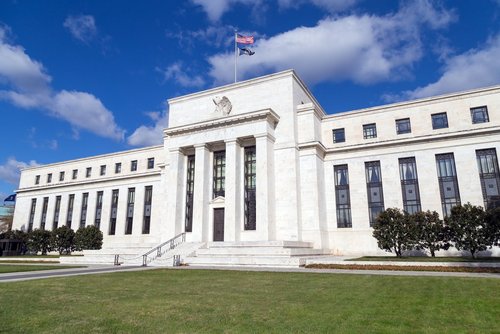Financial markets are eagerly waiting for the US Federal Reserve Bank (Fed) to increase its policy interest rate, the Federal Funds Rate. Experts have expected a Funds Rate hike this September since months. In the past, however, market interest rates showed a variety of responses to the Fed’s decisions. And this time the low US-inflation rate could cause such an “interest rate conundrum“ again.

The neglected low inflation rate
Since the 1960ies the Fed increased its Federal Funds Rate target, the key US policy interest rate, 10 times. The Funds Rate is the most important factor which affects international financial markets and it has tremendous effects on market interest rates, like the US Treasury bond yields. The 10-year US-Treasury bond yield responded to 8 of 10 Funds Rate hikes positively, while it fell after the Funds Rate hikes in 1967 and 2005 and remained lower compared to the time before the rate hike even a year thereafter. In the year 2005 then-Fed chief Alan Greenspan testified before US-congress that the lower market interest rates are, what he called it, “an interest rate conundrum“.
The variety of market interest rate responses to Fed decisions is, however, not puzzling. The reason is that market interest rates reflect the market’s expectations about future Federal Funds Rates: When the market expects a higher Funds Rate for the next 10 years, 10-year Treasury bond yields increase, while the market’s expectation of a transitory higher, but permanently lower Funds Rate shows up in increasing short-term and decreasing long-term yields. In the year 2005 markets simply expected the Fed to lower the Funds Rate in the future – and markets were right. In the last 7 years the Funds Rate stayed near 0 percent.
Longer-term yields will only increase in response to the Fed’s decision, when markets expect a permanently higher Funds Rate. This, however, is questionable: The most recent US-inflation rate took only 0.2 percent, which is massively lower compared to its last peak of 3 percent in September 2011. An in contrast to the European Central Bank (ECB), which has an inflation target defined as an upper ceiling of near 2 percent inflation, the Fed’s inflation target is an average inflation rate of 2 percent. That is why the Fed has to produce more inflation compared to the ECB now. Higher inflation will, possibly, not materialize under a higher Funds Rate. That makes longer term market interest rates unlikely to increase – even when the Fed increases the Funds Rate tonight. The reason is that markets won’t expect the Funds Rate to remain high because of the weak inflation outlook. Hence, non-increasing longer term yields to a Funds Rate hike would be no “conundrum“.
More on the topic

Effects of the Middle East conflict on the German economy
Beyond the humanitarian crisis associated with the geopolitical conflict in Israel, which affects millions of human lives, the Middle East conflict also leaves lasting marks on economic activity not only in the affected region, but also in Germany and the ...
IW
Corporate Insolvencies on the Increase
After a prolonged decline, the number of corporate insolvencies has begun to rise again. The slight increase in 2022 could be interpreted as a step towards normalisation after the sharp drop experienced during the 2020/21 Covid19 pandemic.
IW